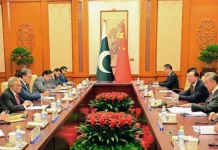It is evident that the farmers’ protest is now taking the form of a political movement and a mass struggle against the repressive policies of the government. Its long-term effects are yet to be seen.
It’s February end and the mood of the season has changed. It’s been three months since the farmers have stationed themselves at the thresholds of Delhi, but the zeal and energy of the movement is still intact.
Over the last three months, the agitating farmers have seen a lot – the bitter cold of Delhi, the attitude of the governmentand its supporters and the enmity of police and paramilitary forces. They also braved the water cannons in freezing cold, crossed the barbed wires and blockers lying in their path.
At one point, after the Republic Day incident, the movement appeared to be over. But soon, as the hidden designs of power that be were exposed, the movement, which has become synonymous with mass struggle, was revived but with more energy. Its resonance crossed the borders of Delhi to reach the village chaupals and the city tea stalls.
The farmers are clear about their objectives –the government must withdraw the three disputed agricultural laws, make MSP legally binding, withdraw cases against the farmers booked during the agitation and release them unconditionally.
The Delhi’s Ghazipur border, where farmers from western Uttar Pradesh are camping, a high and airy pandal is now being erected in front of the main stage to cope up with the approaching summer. Coolers and fans are also being arranged.
It was around 3 p.m. Sanjay, achaudharyor headman of a KhapinMuzaffarnar was huddledin a camp with his comrades, all taking turns to take drags on a hookah. “We work in our fields in scorching heat. We are not worried of the coming summer season,” he said.
With him, 70-year-old Dhanku spoke up, “If our land is not there, then what will we do with the weather, be it pleasant or hot.” All the people shook their heads in affirmation. It is clear that the farmers are afraid of losing their land. “It’s been three months now, but we are ready to sit here for three years. We will return only after the black laws are withdrawn by the government.”
On February 23, the farmers observed the ‘PagdiSambhalDiwas’ on the birth anniversary of freedom fighter Bhagat Singh. On this occasion, Naresh Tikait, the national president of BharatiyaKisan Union (BKU), reached the Ghazipur border. Tikait said, “Now that the government has already suspended agricultural laws, it should abolish them directly and form new laws in consultation with the farmers.” He said that along with this, the MSP law and the withdrawal of lawsuits on farmers are also “our important demands”.
When some farmers in western Uttar Pradesh destroyed their crops recently, Tikait said, “Yes, it has happened. But we are explaining to the farmers that let the crops ripen now, after which the farmer leaders will decide what to do.”
Asked if it was an attempt to pressurise the government, Tikait said that the government is already under pressure, else why would it have put the laws in abeyance.
Apart from putting a big pandal in front of the main stage, the work of making the other pandals big and airy has also started. Preparations are also going on to celebrate Holi. A pyre has been set up for symbolic burning of Holika, an epitome of evil. In between, youngsters sing some folk songs beating drums and plates. The ‘langar’ or the community kitchen is running as usual and arrangements are being made for cold drinking water.
In a small pandal, about 65-year-old Hukum Singh of Bijnor has started selling the KisanAndolanbadges and the farmer unions’ green caps. He sells 40-50 caps daily. Along with his makeshift shop, he has also made a tableau showing the fields. A lamp is burning in it. Hukum Singh says that this is the ‘Jyot’ (light) of the martyrs who lost their lives in the movement.
In the pandal of Baba Kashmir Singh Bhura,a farmer from Uttarakhand, preparations were being made for the evening langar. The elderly farmers are taking rest, and the youth are busy cutting vegetables and cleaning the surroundings. His pandal is stocked with rations, water bottles and other supplies. Sukhwinder Singh, the youth present there, said, “We have been running the langar here since day one.”
He said that the young farmers have started getting restless because now nothing new is happening except the daily speeches and meetings.The elderly farmers are advising them to be patient. In this pandal, Adha Singh, an elder of about 75 years, said that the zeal is high in the youngsters, in such a situation, it is up to the elders to cool them down. “Now we are sending the youngsters back to the fields.They will also be asked to conduct the stage so that their enthusiasm does not deviate in any other direction,” he said. The peasant movement had started as a non-political movement. However, all opposition parties have supported this movement. But now many political parties have not only joined this movement but have also started appearing on the platform of farmers. So, has this movement turned political?
On this question, an agitator sitting in the pandal of Left KisanMorchaput forth, “Farmers are fighting against the government policy. In such a situation, if political pressure can be builton the government to meet the farmers’ demands, what is wrong in this?” They also added, “The government has been trying to crush the farmers protest by creating political pressure.” It is evident that the framers protest is now taking the form of a political movement and a mass struggle against the repressive policies of the government. Though for now the goal of this political movement is limited to the demands of the farmers, but in the coming days its long-term effects can also be seen.




